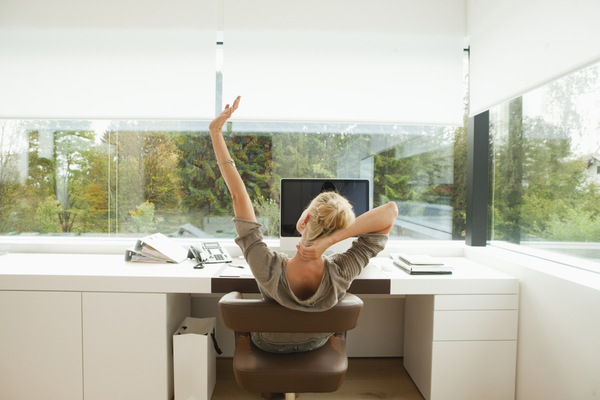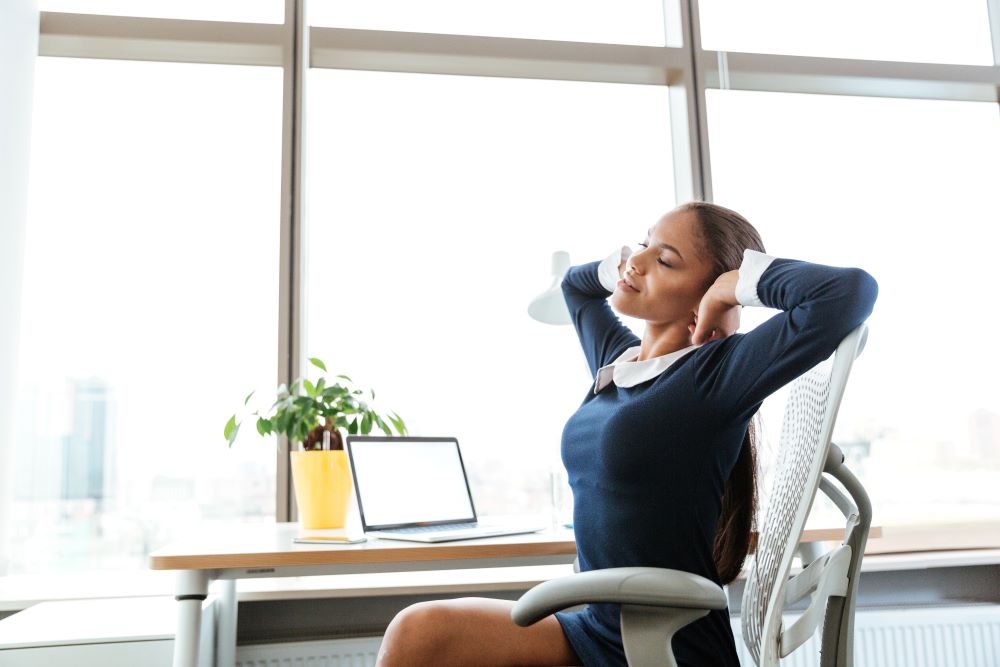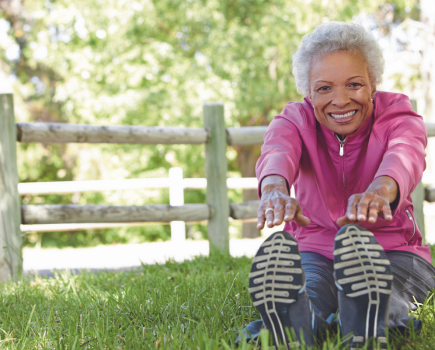Since Covid-19 hit the UK, thousands of us have been working from home but is flexible working making your body less flexible? We look at some ways to avoid locking down your body, and easing back, neck and shoulder pain, with some simple desk Pilates.
Click here to order the latest issue of Top Santé magazine!
You may not yet realise that working from home means working in a very different
way from the one you’re used to – one that’s potentially going to store up
problems for the future and is possibly already causing you harm.
There’s no shortage of advice on the relevant government website, on how to ensure that you comply with the DSE (Display Screen Equipment) regulations, but your workstation at home is probably far removed from your office set-up.
Given the current situation, the need to ‘socially distance’ and the huge number of people involved, it’s fairly unlikely your employer is going to do a full risk assessment, provide you with the equipment you need, or worry unduly about the comfort of your working environment.
According to a recent survey commissioned by Lloyds Bank, it’s a mistake to
imagine that the newly expanded home-based workforce has a purpose-designed
office at their disposal.
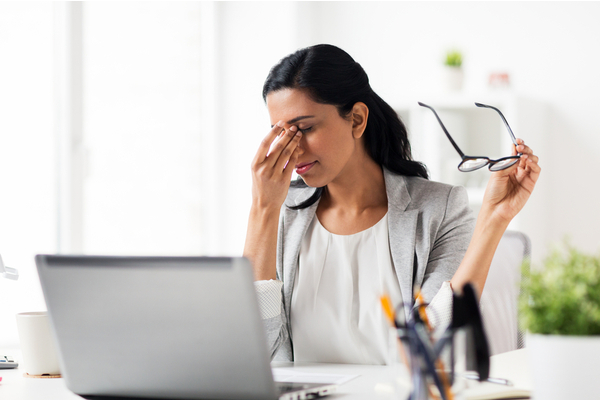
If you’re perched on the breakfast bar or camping out on the sofa, you’re unlikely to be enjoying the benefits of an ergonomic chair, desk, keyboard or computer monitor. At least two thirds of us have had to carve our niche in the living room, dining room, bedroom or kitchen, where other family members also hold a competitive stake in terms of both space and airtime.
It’s far from ideal, but despite the discomfort, we are heroically soldiering on and
even spending longer ‘in the office’ than we did pre-Covid. Perhaps this is due to the
scourge of ‘presenteeism’, a desire to prove productivity, or simply the fact that we
‘clock in’ at the time we’d normally have started the commute (rather than the time
we actually turned on our computers.
The figures show that we’re investing, on average, an additional two hours a day at work. So, in short, we’re spending a significantly extended working day in a makeshift office in which we’re far more likely to adopt awkward, static postures, which quickly develop into discomfort.
Pain in our lower backs, shoulders and neck
Slouching, hunching, over-extending your wrists, or simply sitting too long without
changing position, moving or stretching, will put extra physical stress on your body in
ways you won’t immediately notice. But you will with time without targeted
extension exercises to counteract the damaging effects of all that curved spine
sitting.
So what can you do to avoid musculoskeletal injury and optimise your desk-top
comfort?

Pilates moves to ease a tight back, neck and shoulders
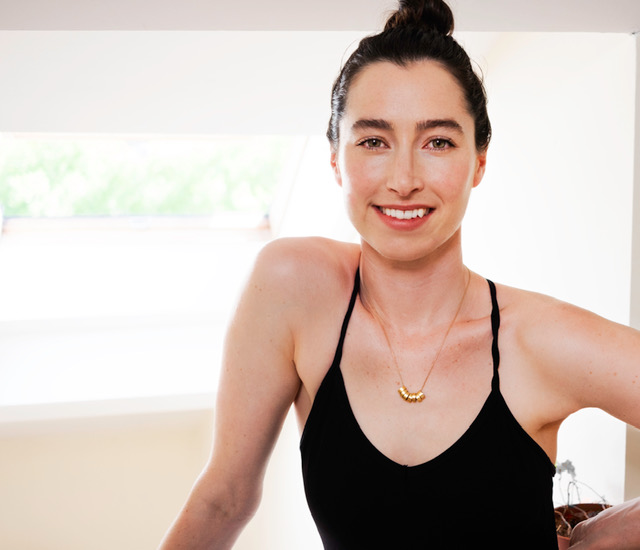 Rosie Terry Toogood of Studio Fluid has created a Pilates While You Work programme, to help you stay strong and supple while working.
Rosie Terry Toogood of Studio Fluid has created a Pilates While You Work programme, to help you stay strong and supple while working.
Rosie says that lockdown is already causing issues for home workers: “My approach is to take Pilates out of the gym and into the office. With a carefully choreographed series of targeted movements at and around your desk, you can both improve your physical comfort immediately and prevent further aches and pains from occurring.
“I’ve designed Pilates while you work to slot seamlessly into your working day, so no need to don your gym kit, roll out a mat or even leave the room. Just kick back, relax and take a few minutes to stretch and release.”
Side Stretch
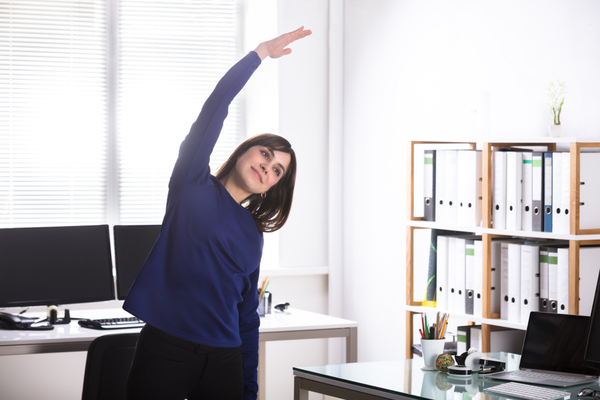
- Sit on the edge of your seat with feet planted on the floor.
- Sit tall with your shoulders relaxed.
- Lift your right arm up straight until the finger tips point at the ceiling.
- Lean your body over to the left – finger tips reaching over to the side, for a nice side stretch.
- Keep within your comfort zone. You can hold on to your chair with the other hand to deepen the stretch if you want to.
- Stay here for three deep breaths, in through your nose and out through your mouth.
- Come out of this movement gently, before repeating on the other side.
- Do two more reps.
‘Upper back and neck reliever’
- Sit up straight on the edge of your seat.
- Plant your feet flat on the floor.
- Place your hands behind your head.
- Relax your shoulders so your elbows can open.
- Raise your chin, lifting your chest forward until you feel the stretch.
- Breathe in, hold for two and breathe out to return to start.
- Repeat twice more.
‘Glute stretch for lower back relief’
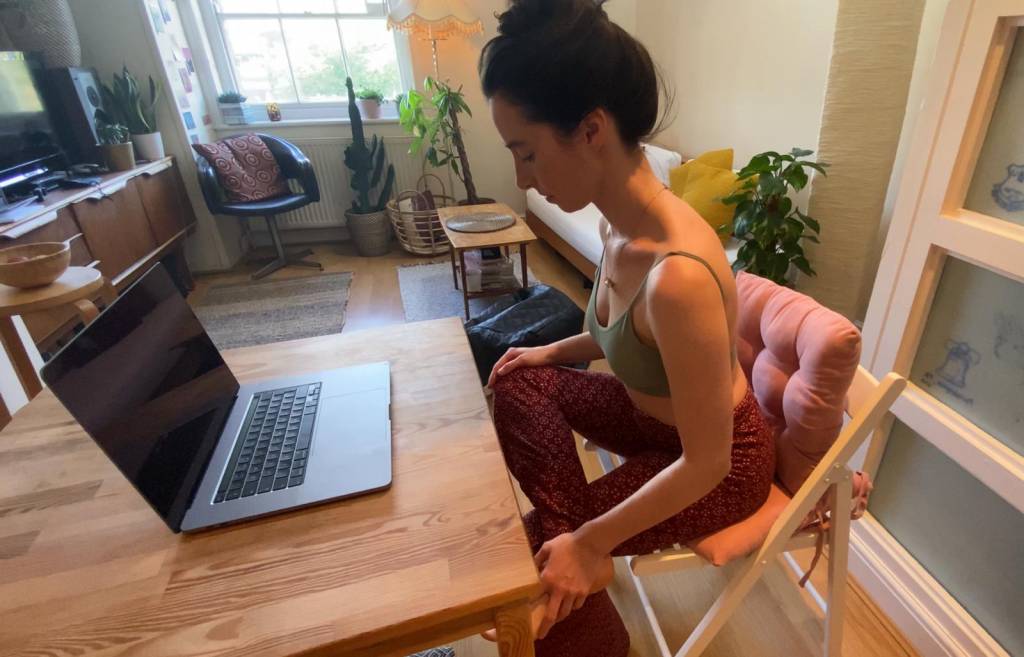 Here, Rosie shows how to do a glute stretch on your chair:
Here, Rosie shows how to do a glute stretch on your chair:
- Sit on the edge of your seat, with feet planted on the floor.
- Cross your right leg just above your left knee – if you feel this is too much, then cross the left foot over the right on the floor.
- Stick your tailbone (your bottom) out slightly.
- Sit up tall, keeping the back of your neck nice and long, shoulders down, and lean forwards until you feel a stretch.
- Stay there for three deep breaths, in through your nose and out through your mouth.
- Return to start and repeat on other side.
To finish…
‘Shoulder release’
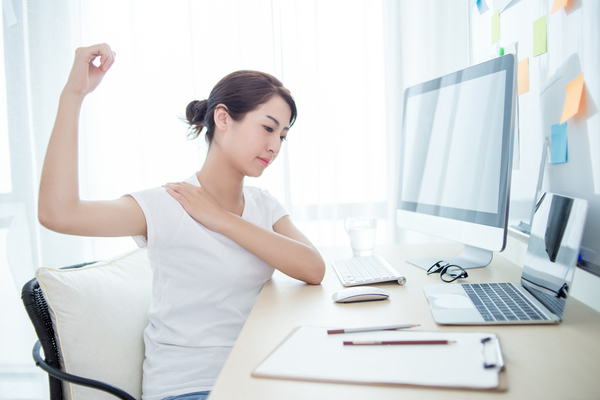
- Relax your shoulders down
- Roll your shoulders forwards and then back very slowly, using a big circular motion.
- Encourage your chest to lift slightly for a nice stretch across the front of your body.
- Roll them four times forward and four times backwards.
- Breathe in and out deeply, in through your nose and out through your mouth.

